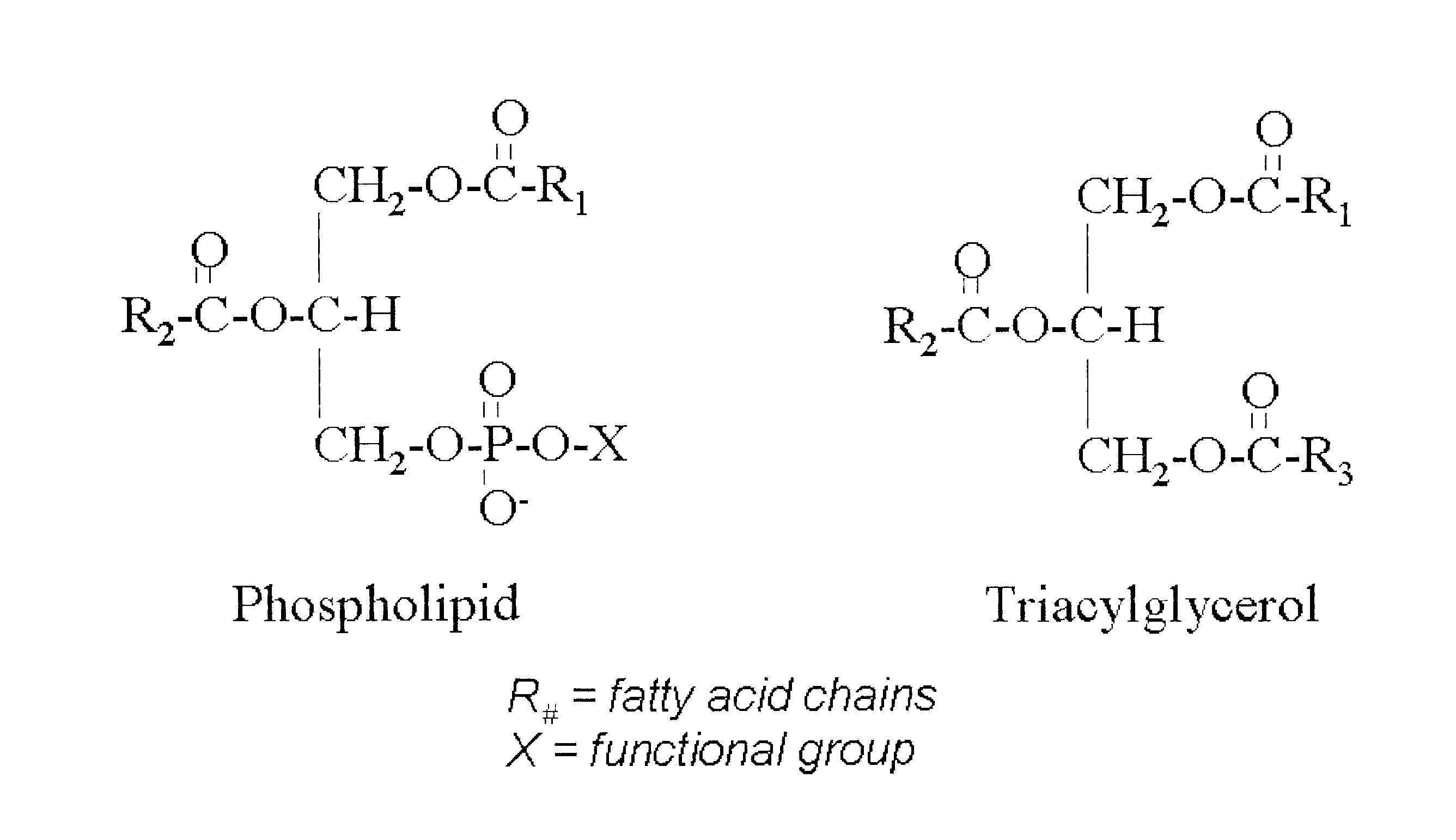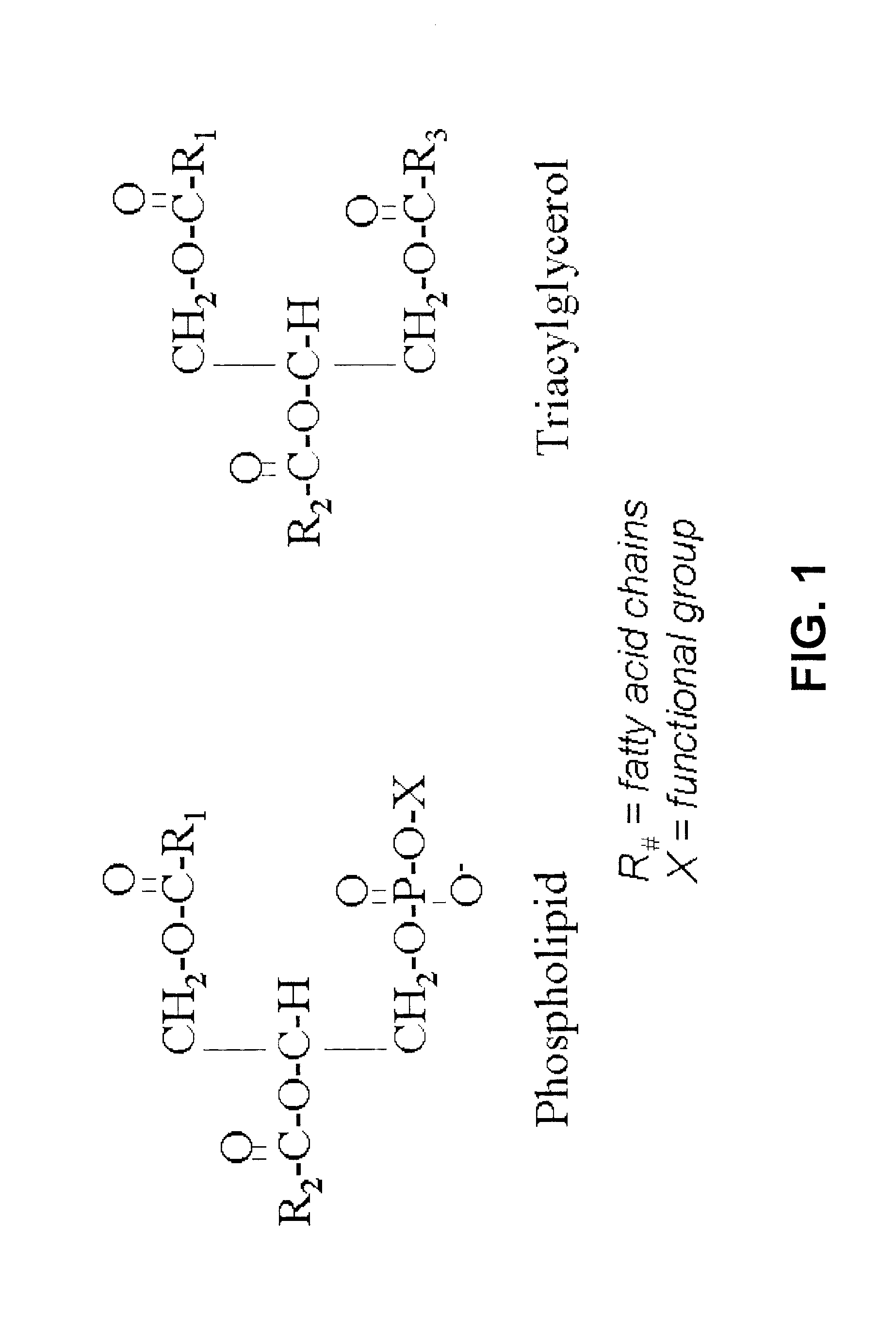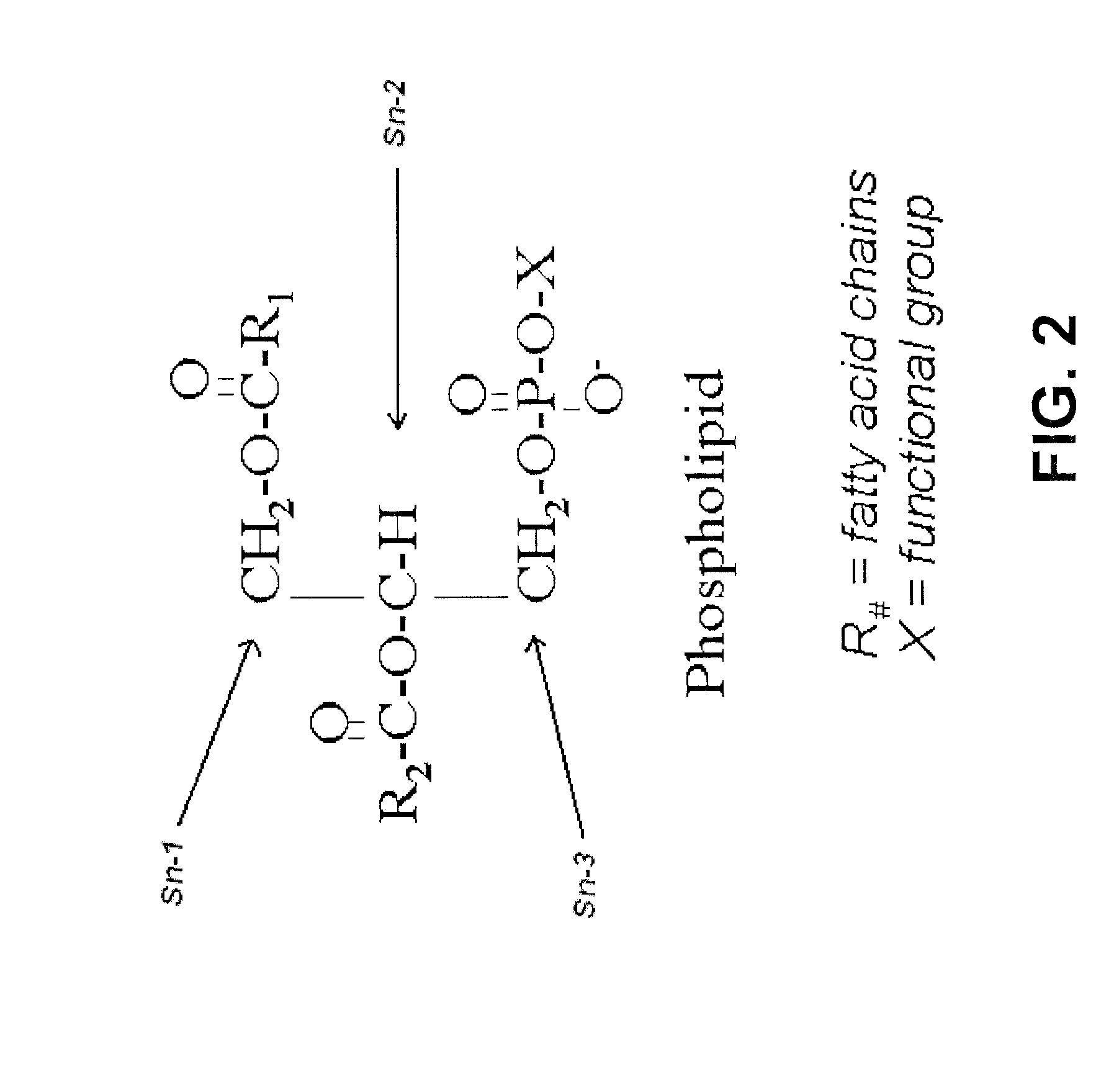Generation of Triacylglycerols from Gums
a triacylglycerol and gum technology, applied in the field of triacylglycerol generation from gums, can solve the problems of significant loss of oil along with the separation of gums in the degumming method
- Summary
- Abstract
- Description
- Claims
- Application Information
AI Technical Summary
Benefits of technology
Problems solved by technology
Method used
Image
Examples
example 1
[0050]1999.1 grams of crude soybean oil containing 769.5 ppm of phosphorous was heated to 75-80° C. under normal agitation utilizing an overhead mixer. 2.0 grams of 50% w / w solution of citric acid was added and sheared for 1 minute. The oil underwent normal agitation for 1 hour with an overhead mixer. The oil was allowed to cool with agitation at normal speed until the oil temperature was 40° C., then 2.4 milliliters of 4 molar sodium hydroxide solution was added, and the mixture was shear mixed for 10 seconds. The citric acid and caustic formed a weak buffer with a pH of 5.0. With the temperature maintained at 40° C., 1.5008 grams of Verenium Purifine™ (PLC lipase lot number 90BU002A1) was added followed by 30 grams of de-ionized water and the entire mixture was shear mixed for 120 seconds. The oil mixture was agitated at normal speed for 60 minutes. With the temperature maintained at 40° C., 0.2132 grams of Novozymes' Lecitase® Ultra (PLA1 lipase lot number LYN05007) was added and...
example 2
[0051]2010.5 grams of crude soybean oil containing 785.1 ppm of phosphorous was cooled to 60° C. under normal agitation utilizing and overhead mixer. With the temperature maintained at 60° C., 1.5316 grams of Verenium's Purifine™ (PLC lipase lot number 90BU002A1) and 0.2073 grams Novozymes' Lecitase® Ultra (PLA1 lipase lot number LYN05007) were added followed by 30 grams of de-ionized water and the entire mixture was shear mixed for 45 seconds. The oil mixture was agitated at normal speed for 60 minutes at a temperature of 60° C. The enzyme treated oil was then centrifuged; and the separated oil and wet gums were collected. The residual phosphorous in the PLC and PLA1 combined enzyme mixture at neutral pH produced a degummed oil with a residual phosphorous of 109.6 ppm. The FFA was 0.61% and DAG was 0.74%.
example 3
[0052]2005.3 grams of crude soybean oil containing 742.9 ppm of phosphorous was heated to 75-80° C. under normal agitation utilizing an overhead mixer. 2.0 grams of 50% w / w solution of citric acid was added and sheared for 1 minute. The oil underwent normal agitation for 1 hour with an overhead mixer. The oil was allowed to cool with agitation at normal speed until the oil temperature was 60° C., then 2.4 milliliters of 4 molar sodium hydroxide solution was added, and the mixture was shear mixed for 10 seconds. The citric acid and caustic formed a weak buffer with a pH of 5.0. With the temperature maintained at 60° C., 0.7491 grams of Verenium's Purifine™ (PLC lipase lot number 90BU002A1) was added followed by 60 grams of de-ionized water and the entire mixture was shear mixed for 45 seconds. The oil mixture was agitated at normal speed for 60 minutes. With the temperature maintained at 60° C., 0.1220 grams of Novozymes' Lecitase® Ultra (PLA1 lipase lot number LYN05007) was added an...
PUM
| Property | Measurement | Unit |
|---|---|---|
| Temperature | aaaaa | aaaaa |
| Temperature | aaaaa | aaaaa |
| Fraction | aaaaa | aaaaa |
Abstract
Description
Claims
Application Information
 Login to View More
Login to View More - R&D
- Intellectual Property
- Life Sciences
- Materials
- Tech Scout
- Unparalleled Data Quality
- Higher Quality Content
- 60% Fewer Hallucinations
Browse by: Latest US Patents, China's latest patents, Technical Efficacy Thesaurus, Application Domain, Technology Topic, Popular Technical Reports.
© 2025 PatSnap. All rights reserved.Legal|Privacy policy|Modern Slavery Act Transparency Statement|Sitemap|About US| Contact US: help@patsnap.com



